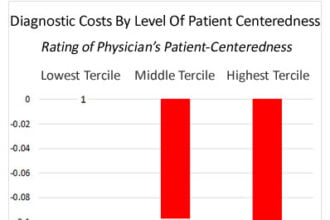 While the CDC and the Pentagon have both issued emergency preparedness plans for a zombie apocalypse, it’s unlikely most hospitals have assessed this kind of “threat.” However, zombies may already be among us, lurking around
While the CDC and the Pentagon have both issued emergency preparedness plans for a zombie apocalypse, it’s unlikely most hospitals have assessed this kind of “threat.” However, zombies may already be among us, lurking around
 While the CDC and the Pentagon have both issued emergency preparedness plans for a zombie apocalypse, it’s unlikely most hospitals have assessed this kind of “threat.” However, zombies may already be among us, lurking around the corners in hospital hallways or seated at the nearest nurses’ station. Here are three types of “zombies” that may be in your hospital and what you should do about them:
While the CDC and the Pentagon have both issued emergency preparedness plans for a zombie apocalypse, it’s unlikely most hospitals have assessed this kind of “threat.” However, zombies may already be among us, lurking around the corners in hospital hallways or seated at the nearest nurses’ station. Here are three types of “zombies” that may be in your hospital and what you should do about them:
- Zombie Patients
These patients are unengaged and passive about their own care, unable or unwilling to help themselves, who have become reliant on the healthcare system in an unhealthy way. The Robert Wood Johnson Foundation says people who are actively engaged in their health care are more likely to stay healthy, while those who lack the skills and confidence to manage their own care often require more of it and incur up to 21 percent higher health care costs. These patients may feel overwhelmed or powerless in a system they don’t understand.The cure for these zombie patients is information and tools in small doses at the right time just when they need it. Asking questions and engaging patients on a personal level is the first place to start. Once trust has been gained, it’s time to focus on baby steps towards better health. Achieving small successes creates empowerment that can compound upon itself. Enlisting the help of a caregiver may be an alternate road to success with these patients.
- Zombie Employees
These internal zombies are disengaged healthcare staff, those who are just going through the motions each day, doing the minimum job requirements, but not making the personal connections with patients to deliver real healing. According to Gallup, 29 percent of U.S. employees are engaged, 54 percent are not engaged, and 18 percent are actively disengaged. These kind of employees are dangerous, as their attitudes can be contagious and create a toxic work environment for all, as well as have downstream effects on patient safety, patient satisfaction, staff productivity and hospital profitability.To bring these employees “back to life”… first, you have to have a defining company culture that people want to align with. Cleveland Clinic made a bold statement when they declared “Patients First” and decided to reclassify all their employees as caregivers, but it also gave their entire team something to rally around. Secondly, seek out your engaged employees and ask what motivates them. Then see if you can transfer enthusiasm about their role to others. Lastly, find and champion the strengths in every employee and make sure they can take advantage of those strengths as much as possible, as that is how people find value in their everyday jobs.
- Zombie Processes
These are the things in your organization that you do, because “that’s the way we’ve always done it.” When the team becomes complacent and stops looking for opportunities for improvement, programs go stale, become less effective, and even lose efficiency. Years later you discover that you’ve been wasting time and money on activities that didn’t add any value, but now it’s too late to recover what was lost. When’s the last time you looked at the paperwork you’re handing out to patients daily? When were your clinical pathways last reviewed?It’s healthier to be in a state of continuous improvement and innovation. Seek out new knowledge on a regular basis and do your own ‘value’ testing on current processes. It can also be productive to bring in an outside set of eyes to take a fresh perspective on what you are doing.
While these three types of “zombies” don’t eat brains, they do consume time, money and attention. By keeping a vigilant eye out for them and addressing them proactively, you can make sure your organization thrives in any type of circumstance.








